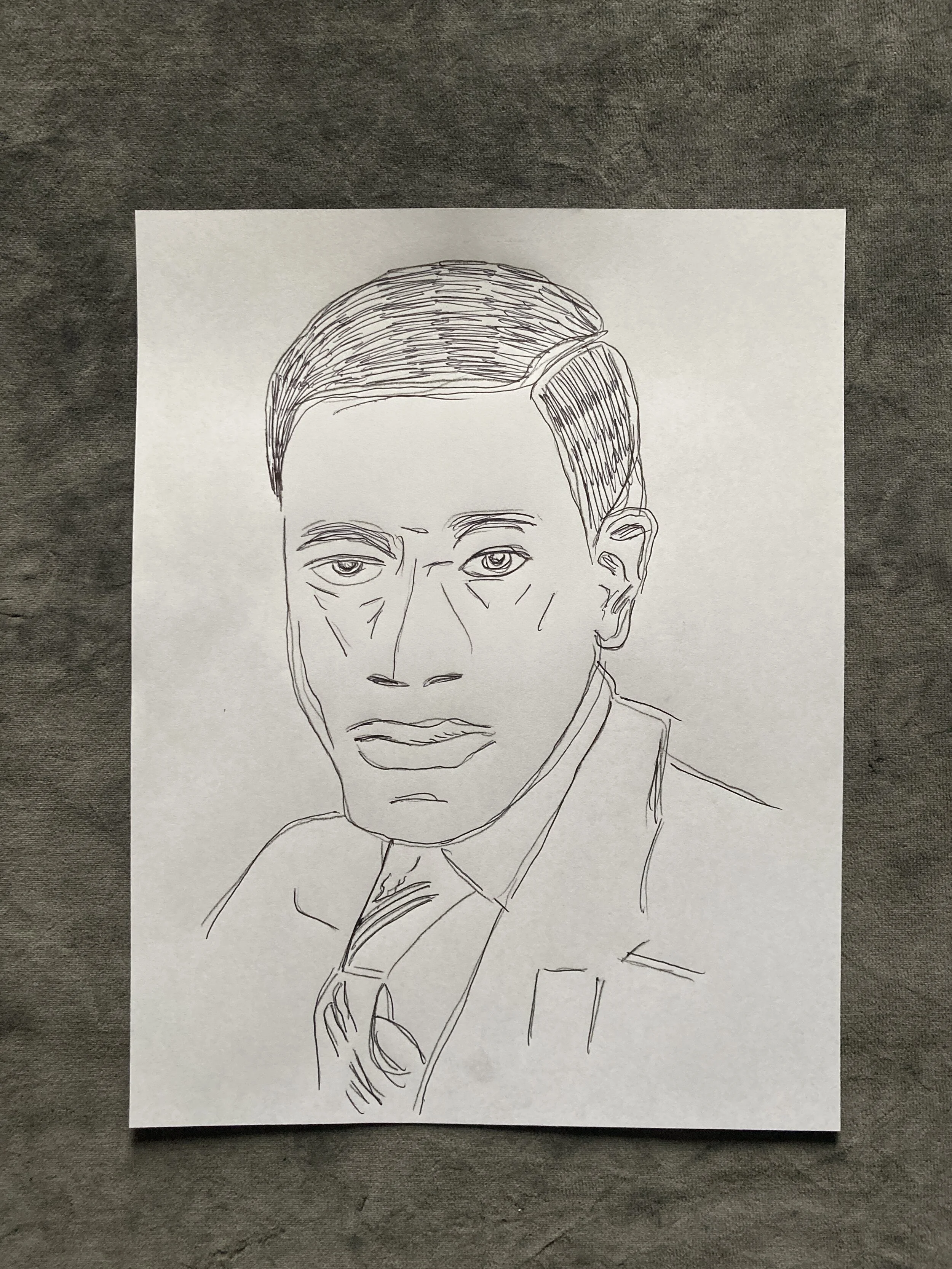
Dr Elbert F Cox portrait, sourced from Indiana University Library.
Line drawing of the portrait.
Freehand line drawing of portrait, collaged within Dr Cox’s PhD thesis.
Dr. Elbert F. Cox. Initially obtaining an undergraduate degree with Indiana University. Dr Cox would later at Cornell University become first Black person in the United States, and possibly ever, to receive his PhD in mathematics. I came across his biography and portrait via Indiana University Archive blog. Describing in detail his unjust exclusion from the Euclidean Circle; surviving the Evansville race riot of 1903 and his subsequent somewhat unacknowledged career.
Initially I produced a freehand line drawing based upon his portrait. Camera shutter speeds early 20th century was significantly slower, those who posed must hold a position comfortably for a length of time. Yet the image appears as a spilt second moment; I started to speculate the complexities of his mind - was he running through a series of equations at that moment?
My practice relies on collage, changing or manipulating images into a surreal composition. The drawing was boring and needed to be pushed. So I collaged Dr Cox’s PhD thesis titled The polynomial solutions of the difference equation af(x+1) + bf(x) = [Phi](x) within the line drawing. The composition ended up having so much more depth, complexity, layers.
What is a portrait? Should it be identifiable? Should the marks somehow represent Dr Cox’s facial features? Is this collaged drawing an abstraction or partly a biography? How can retained archival / library information consult art?
Collage item.




